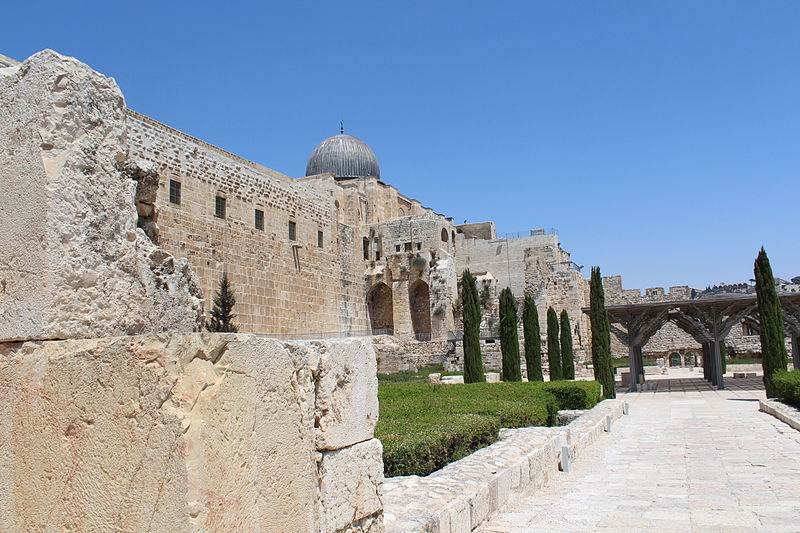The Jerusalem Archaeological Park and Davidson Center – first-century Jerusalem in the Shadow of the Temple
The Jerusalem Archaeological Park and adjacent Davidson Center offer a window into Jerusalem on the eve of its destruction by the Romans in 70 C.E. The site contains direct artifacts from the city’s destruction in 70 C.E., as well as significant archaeological remains from the Byzantine and early Arab periods.
The site encompasses the south section of the Western Wall together with Southern Wall of the Temple Mount and the areas adjacent to them. It can be seen from without looking to the right (east) while walking from the Dung Gate to the Western Wall Plaza. If you like a private place to be at one – then the Davidson offers a continuation of the Kotel (Western Wall) and also the Southern Temple Wall – without the crowds and organized prayers.
The Davidson Center
The Davidson Center helps visitors appreciate what Jerusalem looked like in the late Second Temple Period (1st century) through a combination of exhibitions of artifacts, illustrations, interactive multimedia and its highlight a virtual reality reconstruction of the Temple Mount on the eve of its destruction. There are two short films are continuously screened: “The History of Archaeological Research in Jerusalem” and “A Pilgrims Story”. Of particular interest are the coin collections and the probable implications – showing the importance of Jerusalem.
The Jerusalem Archaeological Park
Beyond the Davidson Center lies the Jerusalem Archaeological Park. The park affords a unique opportunity to explore the city of 2,000 years ago. Because of its complexity, we recommend visiting it on a guided tour to get the most out of the site.
If you go at it on your own then head down the path towards the southwestern corner of the Temple Mount. As you approach you will be walking on the living level of the Early Arab period. The building on your right is the ruins of a large Omayyad public building, possibly a palace or pilgrim’s hostel.
At the southwest corner, follow the wooden steps down to the 1st century street below. 2,000 years ago this was the busiest street in Jerusalem, lined with shops and so jam packed with people during Jewish pilgrimage festivals that it was probably difficult to walk down.
The Western Wall is immediately in front of you. This is an excellent place to explore Wall’s architectural background. Look up at the stones protruding from the wall above. This is Robinson’s Arch. It was once part of a huge stairway, which crossed over the street below and provided access to the Royal Colonnade on the Temple Mount above. On the northern side of the street, adjacent to the Wall is a large pile of Herodian Stones lying where they fell nearly 2,000 years ago. This is an artifact of Jerusalem’s destruction by the Romans in 70 C.E.
Retrace your steps up the wooden stairs and turn left at the far end of the Omayyad building onto a path that leads to an opening in the city wall. Proceed through the opening and follow the path to the broad steps beneath the Southern Wall of the Temple Mount. In the corner above and farther off to the right (east) are two sets of now plugged gates that Jewish pilgrims once used to visit the Temple. On the other side of the white metal fence on your right are miqvehs – ritual baths, where pilgrims immersed themselves before ascending to the Temple.
The extensive site can be explored further, but most visitors choose to conclude their visit here. The entrance pavilion also serves as the site’s exit.
The quality and scale of the sights may take you by surprise and so although this is a well worn stop on many tourist itinerary it is really one of Jerusalem’s gems and secrets. Children will need some help to understand, but there is plenty to keep their interest. Photographers will be rewarded here, especially in the softer light towards evening.
Getting to the Davidson Center
To visit the site, enter from the plaza immediately to your left (west) when coming into the Old City through the Dung Gate. Or as you leave the Kotel (Western Wall) area without climbing the steps into the Old City then the entrance to the Davidson is on your right immediately before the Old City Walls.
